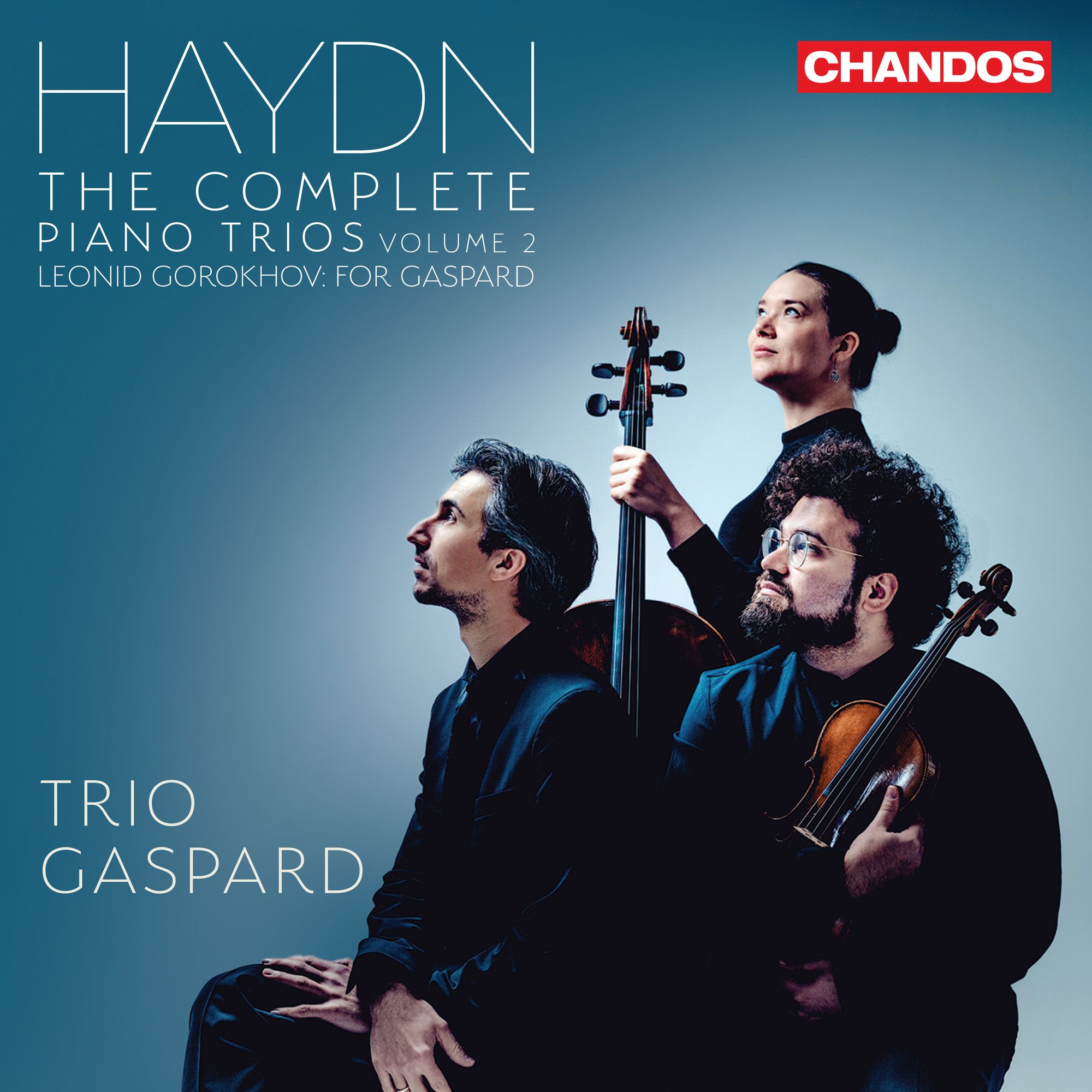More sublime Haydn Piano Trios from Trio Gaspard
A terrific disc, full of life, and yet full, also, of timeless wisdom

Volume 1 of this cycle from Chandos was a shared post with a Naxos release; volume 2 has a post all to itself. - this newcomer is a disc of pure joy and, as before, adds a short modern piece at the end to enhance our experience.
Here's the promo video:
There are no fewer than five trios here. The first, Op. 71/1 (No. 35, Hob. XV:21) dates from 1795, a piece of stunning invention hidden behind modest emotions. The opening is an “Adagio pastorale” prior to a Vivace, the theme stated gently in legato octaves. It's only a few bars but is significant going forward. The Vivace assai trips along nicely, but listen to how the Trio Gaspard find moments of almost buzzing energy. There is nothing complacent or just jolly about this performance:
The slow movement, marked “Molto andante” sounds almost improvised here; it stands in high contrast to the tautly-organised Presto finale. It's impressive how the Trio Gaspard finds just the right tempo for this finale, pianist Nicholas Rimmer marvellously fleet-fingered:
The disc is intended as a recital in the sense it can be listened to as a whole as well as divided into its component parts. One can feel this immediately with the onset of the Andante opening to the G minor Trio (No. 33, Hob. XV:19, Op. 70/2), a piece written during Haydn's stay in London. Trio Gaspard shades this Andante superbly - and shapes it well, too, before the Presto - a Preto itself full of shadows and doubts (we are in G minor, after all):
A principally melodic slow movement (Adagio ma non troppo, here just the right tempo) precedes a sparkling Haydn finale. It's in G minor, true, “righting’ itself into G major for its close. All is well with the world ....
The first two were written in 1795 and 1794 respectively. Now we move back to the early Trio No. 7 in G, also known as a Divertimento, from around 1760. This is the only piece on the disc in four movements. Haydn does play a little trick: his second movement is a Menuet, and when the finale dawns, it too implies a Minuet, but it is not to be .... In between sits a heavenly slow movement. This might be early in the piano trio chronology, but this is a dream:
The finale is a delight, not just for its false Menuet angle: listen to Haydn's deft and witty use of string pizzicato:
In contrast, the Trio Np. 21, Hob. XV:8, Op. 40/3 (1784/5) begins in decidedly grand fashion. Cast in only two movements, it does put me in mind of Haydn's Keyboard Sonatas (on which he had been concentrating in teh years preceding this Trio). The grand gesture and the contrasts, the sometimes two-part piano texture, all made a side-glance towards that medium. And yet the strings are used not only intelligently(emphasis and the suchlike) but for moments of real illumination - and there's a real “moment” of cadential violin/keyboard interaction that makes its mark:
The concluding Menuetto is curtly and distinguished. On the surface it demands little (even with a Minore-swerve), but Trio Gaspard reveal it as the perfect balancing act to the opening Allegro moderato.
The final Trio on the disc is the E flat, Op. 86/3 (No. 45, Hob. XV:29). Written in 1795, it is the most mature trio herec. The increased sophistication is obvious in a development of real mastery: it is as if all key areas are available at Haydn's whim:
The slow movement, an “Andantino ed innocentemente” (!) is less than three minutes long, but what a punch it packs! Nicholas Rimmer's little flurries of quasi-improvisation are perfect:
Humour is present and correct in the finale (marked “In the German style”) - especially the very final gesture. It's cheeky and almost outrageous - well done to Trio Gaspardon achieving this in the recording studio!:
A real selling point (for me) in this series is the addition of premiere recordings of new works, here For Gaspard (2022) by Leonid Gorokhov (born 1967). There is a Haydnesque deft hand in the first movement, “Hiding D”. Quotations abound, but the composer plays hide-and-seek with the listener. The second movement (“Minuet”) grew out of a sketch for the first, emerging as such “during the more melancholic small hours of a sleepless night”:
A terrific disc, over 80 minutes long, full of life, and yet full, also, of timeless wisdom. The inclusion of new pieces reminds us of the permanent relevance of Haydn to our lives. Bravo.
